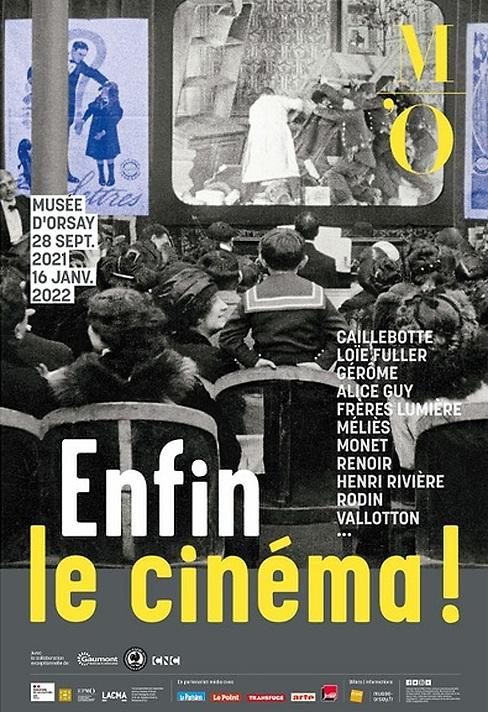Cinema at Last! Arts, Images and Entertainment in France, 1833–1907, newly featured in Apollo – The International Art Magazine, offers a compelling exploration of the formative years of French cinema. Tracing the evolution of visual culture from early photographic experiments to the dawn of motion pictures, this article delves into how arts and entertainment intersected during a pivotal era. With an eye for the cultural and technological breakthroughs that shaped modern cinema, it sheds light on France’s crucial role in the birth of moving images and the emergence of cinema as a popular art form.
Early Innovations in French Visual Arts Setting the Stage for Cinema
Well before the flickering magic of cinema captivated audiences worldwide, French artists and inventors laid critical groundwork through a series of groundbreaking visual experiments and technological breakthroughs. The period between the mid-19th century and the early 1900s witnessed pioneers like Émile Reynaud, whose Praxinoscope transformed static drawings into fluid, enchanting motion. Concurrently, drawing on advances in photography and optics, innovators such as Louis Daguerre and Étienne-Jules Marey expanded the boundaries of image-making, blending art with science to manipulate time and motion.
Several key developments set the creative and technical foundation for cinema’s rise:
- Persistence of Vision: Early optical toys like the Zoetrope demonstrated how sequential images create the illusion of movement.
- Photographic Advances: Techniques refined by Daguerre and Nadar allowed capturing motion–paving the way for motion pictures.
- Motion Studies: Marey’s chronophotography dissected human and animal movement frame-by-frame.
- Entertainment Venues: Parisian theaters and fairs provided fertile ground for showcasing visual novelties to eager audiences.
| Innovator | Invention | Impact |
|---|---|---|
| Émile Reynaud | Praxinoscope | First projector of animated drawings |
| Louis Daguerre | Daguerreotype | Revolutionized image capture, precursor to film |
| Étienne-Jules Marey | Chronophotography | Analyzed movement in sequential photographs |
The Intersection of Moving Images and Popular Entertainment in 19th Century France
The dawn of moving images in 19th-century France ushered in a revolutionary phase for popular entertainment, bridging the gap between traditional art forms and modern spectacle. As the Lumière brothers showcased their pioneering cinematograph, audiences found themselves captivated by the fusion of visual storytelling and technological innovation. This convergence not only transformed how stories were told but also democratized access to culture, as cinema appealed to a broad social spectrum, from bohemian artists to working-class families.
Key factors fueling this cultural shift included:
- Technological breakthroughs: The refinement of projection and photography techniques expanded narrative possibilities.
- Urbanization: Growing Parisian and provincial populations created new, eager audiences.
- Cross-disciplinary influences: Theater, vaudeville, and fine arts intermingled, enriching cinematic expression.
| Year | Milestone | Impact |
|---|---|---|
| 1895 | First public Lumière screening | Mass introduction to moving images |
| 1897 | Birth of film studios | Commercialization of cinema |
| 1900 | Paris Exposition | Showcased cinema as art and entertainment |
This period witnessed cinema’s evolution from a mere novelty to a vital cultural institution, where innovation and entertainment merged seamlessly. French filmmakers capitalized on the era’s vibrant arts scene, ensuring that moving images were not only a technological feat but also a potent storytelling medium that resonated deeply with contemporary audiences.
Key Figures and Pioneers Shaping the Birth of French Cinema
In the formative years of French cinema, a constellation of visionary artists and inventors propelled the medium from a mere technological curiosity to a revolutionary form of storytelling. Among the trailblazers, Louis Lumière stands paramount, his invention of the CinĂ©matographe in 1895 marking a watershed moment. Lumière’s short films, such as Workers Leaving the Lumière Factory, not only captivated audiences but also demonstrated cinema’s potential to reflect modern life with unprecedented immediacy and realism. Alongside him, Georges MĂ©liès harnessed the power of visual effects and narrative to transform moving images into magical, fantastical worlds, laying the groundwork for genre cinema and special effects.
The era was enriched by a network of innovators and artists whose contributions diversified the cinematic experience. This group included:
- Émile Reynaud – A pioneer of animated projection, whose Praxinoscope predates true cinema.
- Alice Guy-Blaché – One of the first female filmmakers, who advanced narrative complexity and director-driven cinema.
- Charles Pathé – Entrepreneur and producer who professionalized film distribution and production models.
| Figure | Contribution | Era |
|---|---|---|
| Louis Lumière | Invented Cinématographe, created earliest documentaries | 1895–1905 |
| Georges Méliès | Special effects pioneer, narrative film innovator | 1896–1913 |
| Alice Guy-Blaché | Directed first narrative films, female pioneer | 1896–1907 |
| Charles Pathé | Film production and international distribution | 1896–1907 |
Preserving and Experiencing France’s Cinematic Heritage Today
Across France, institutions and cinephiles alike are deeply committed to safeguarding the rich legacy of early cinema, ensuring it remains accessible and vibrant for contemporary audiences. Restoration projects, powered by cutting-edge digital technology, are bringing fragile nitrate films back to life with unprecedented clarity. Museums and cultural centers now host immersive exhibitions and screenings that allow viewers to engage directly with pioneering works, illuminating the innovation and artistry that defined the country’s formative cinematic years.
Key initiatives include:
- Archival collaborations between the Cinémathèque Française and international film bodies
- Public screenings of meticulously restored silent films, accompanied by live musical scores
- Educational programs designed to highlight the socio-political contexts of early 20th-century cinema
| Restoration Project | Year Completed | Film Highlighted |
|---|---|---|
| Golden Age Revival | 2022 | La Sortie de l’Usine Lumière |
| Silent Voices | 2023 | FantĂ´mas |
| Moving Pictures Rediscovered | 2024 | Le Voyage dans la Lune |
Insights and Conclusions
As this exploration of early French cinema concludes, “Cinema at Last! Arts, Images and Entertainment in France, 1833–1907” stands as a vital chronicle of a transformative era in visual culture. By tracing the intersection of art, technology, and public spectacle, the exhibition—and the accompanying coverage by Apollo – The International Art Magazine—illuminates the roots of modern entertainment. For historians and cinephiles alike, this retrospective offers a compelling glimpse into how France pioneered the moving image, shaping the trajectory of global cinema in ways still felt today.




